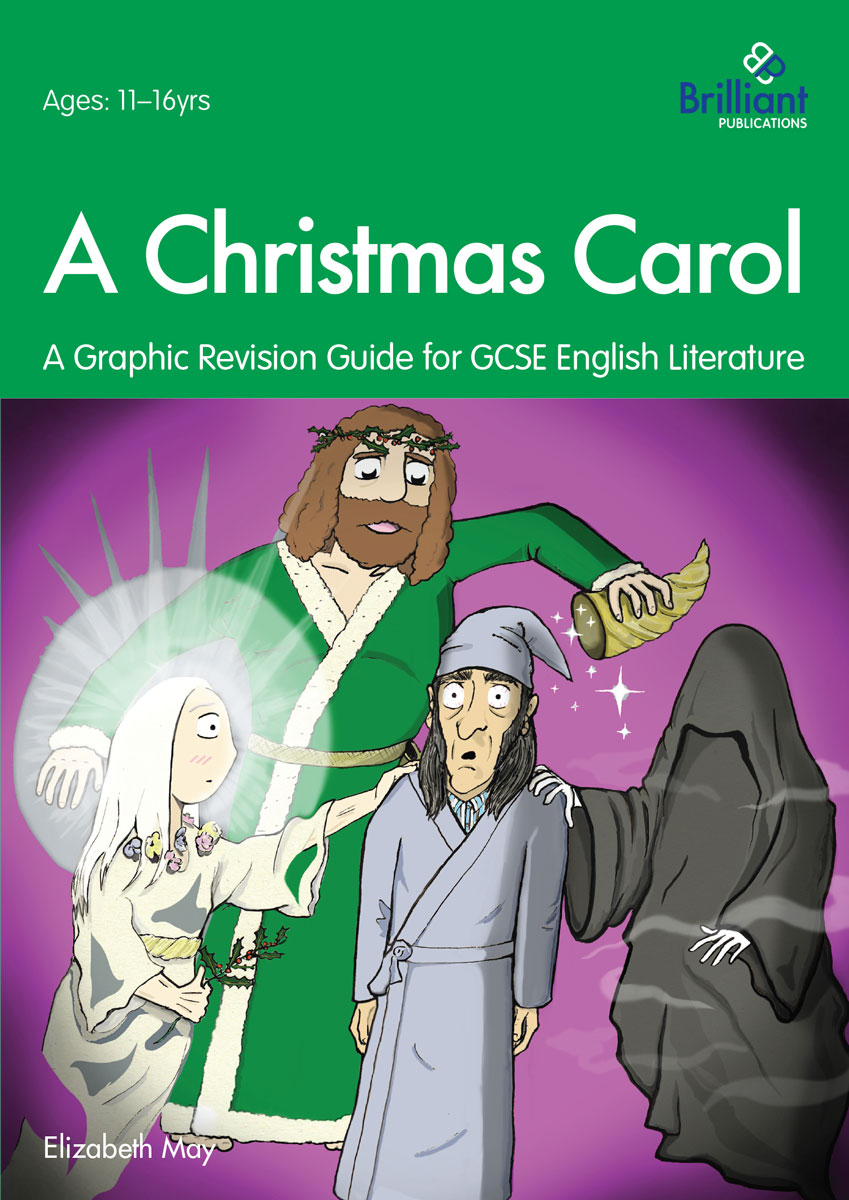
|
Graphic Revision Guides help improve GCSE English results |
These Graphic Revision Guides make studying or revising iconic books easy and will help your students demonstrate their understanding of the texts. Suitable for all GCSE English Literature examinations, Brilliant Publications’ Graphic Revision Guides have been specially written by Elizabeth May to support students with lower ability or Special Needs (SEN). They contain teaching resources especially tailored to strengthen the student’s understanding of plot, characters, quotes, themes and more.
The books bring an element of fun and informality to the study of classic GCSE texts in an engaging and simple manner. Having these graphic sheets in front of them helps students immensely in understanding and sequencing the plot, remembering key events, distinguishing between characters and understanding characters’ perspectives.
Although initially designed to help and support SEN students, the author soon found that all the students in the class wanted copies of the graphic sheets and benefited from using them. Many students find it difficult to remember what happened in a book and in what order, let alone to write a timed essay picking apart the intricacies of it. With these books, students will gain confidence in their knowledge before jumping into the deep end.
Each Graphic Revision Guide contains:
- the story re-told in graphic form, making it easy to follow the plot
- context pages, giving background information
- character pages for each of the main characters, including quotes from the book
- pages for the key themes of the book – with relevant quotations
- additional graphic reference material to help with the setting and bringing the plot to life
- activity pages including vocabulary lists, matching the quote to the character and quote analysis maps.
Each Graphic Revision Guide is designed to be accessible to students with a range of Special Needs (SEN) through the use of:
- a heavy focus on visuals to help students to remember, understand, get interested in and create associations to the text
- simple language for greater accessibility
- a focus on vocabulary – explaining tricky words
- a focus on plot comprehension; chapter summaries are condensed to include key events, and are image-based to help students remember what happened and consolidate a full picture of the plot
- key quotes are repeated and linked to characters and themes.
To find out more information about a book, click on the book cover.
To look at sample pages from each book, click on the blue text and the sample page will open in a new window.





